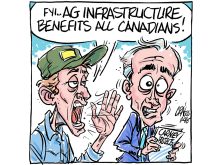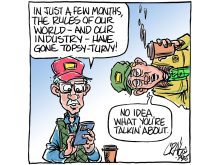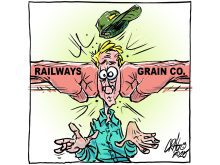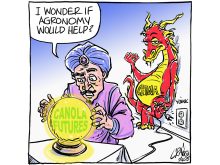Two 2022 studies, similar results. Canadians, when asked, say they are concerned about changes in the climate, inflation and labour supplies as they relate to food production.
The Canadian Centre for Food Integrity and Bayer’s Climate Fieldview both queried the nation’s consumers to see how farmers and agriculture are perceived by the public.
Agriculture comes in many forms, just as farms do.
From a vegetable operation in southern Ontario to cattle on remote pastures in northern British Columbia to Annapolis Valley orchards in Nova Scotia to grain fields in Saskatchewan, hog barns in Quebec, dairy and poultry operations in the B.C.’s lower mainland, it is all different, and yet the same.
Read Also

Kochia has become a significant problem for Prairie farmers
As you travel through southern Saskatchewan and Alberta, particularly in areas challenged by dry growing conditions, the magnitude of the kochia problem is easy to see.
Farmers are seen as farmers. The general public doesn’t generally think very hard about whether they are supply managed or export oriented.
But how much do Canadians know about their country’s agriculture? In some ways that is what polling from Climate and CCFI is trying to learn, but more importantly, it conveys those results to others in government and the media.
While the polls delivered plenty of positive opinions about farmers and the industry, it also pointed out flaws in respondents’ impressions about agriculture that the sector could try to address in the days ahead.
The climate poll found that about 80 percent of Canadians have faith in Canadian farmers’ ability to meet demand for food. In some provinces, including Saskatchewan, that faith has slipped and in Quebec it rose significantly. Among those who have little confidence in the food supply, concerns about weather and climate change, fewer farmers and farmland loss are factors.
Cost of food, according to the CCFI study, is one of Canadians’ chief concerns and that has grown year over year. Results showed that in 2020, Canadians thought agriculture was headed in the right direction with its food system, but in 2022, the ground shifted back to pre-COVID responses and thoughts that ag is going in the wrong direction.
Overall, Canadians appear to believe it is improving. And it is.
In some agricultural sectors, net farm incomes have been rising, allowing for greater investment in technologies that help to ensure sustainability.
But the public isn’t convinced that farmers are doing the best they can for the environment. In the CCFI polling, only 40 percent of respondents said farmers are good stewards of the environment, although that is up from 34 percent in 2021.
Perceptions of humane treatment of animals for meat, milk and eggs also rose to 34 percent versus 25 last year.
Canadian farmers continue to score well compared to other sectors. Forty-two percent feel farmers are “very trustworthy” while scientists got 35 percent and agriculture overall and Canada’s food system scored in the mid-20s. Government agencies got a 14 percent score on the same scale.
The climate study found that only 13 percent of Canadians felt that farming was innovative when compared to other major industries, and only 26 could cite any examples of new technologies used by producers. Sixteen percent don’t know how farmers support sustainability, down from 24 percent in 2021.
There is clearly a significant gap in public knowledge about agriculture. It likely starts with Canada’s education system and ends with the overall public profile of farming.
The agriculture sector must do better in telling its story of progress and innovation.
Karen Briere, Bruce Dyck, Barb Glen and Mike Raine collaborate in the writing of Western Producer editorials.

















